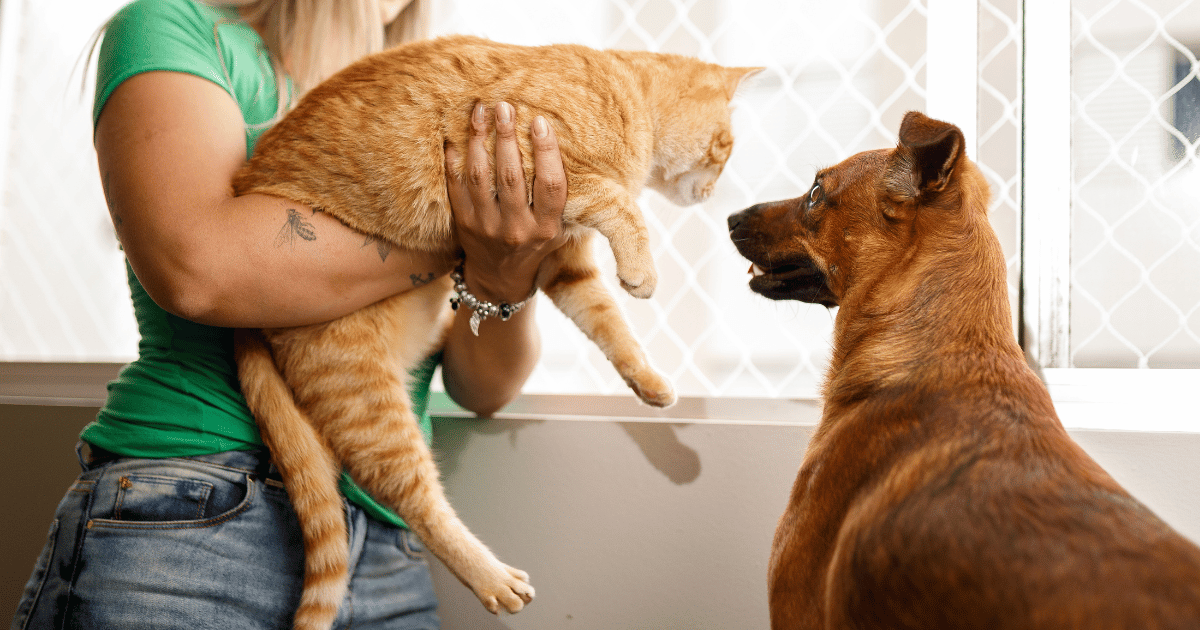Uncategorized
Introducing Cats to Other Pets: A Step-by-Step Guide
Introducing a new cat to your household can be an exciting but delicate process, especially when you already have other pets. Whether you have a dog, another cat, or a different furry friend, it’s crucial to ensure a smooth and harmonious introduction. In this step-by-step guide, we will explore effective techniques to introduce cats to other pets, ensuring a positive and stress-free experience for everyone involved. Read on to learn how to successfully integrate your new feline companion into your multi-pet family.
How do you introduce a cat to another pet?
Introducing cats to other pets requires patience, gradual exposure, and careful supervision. Following these steps can help you pave the way for a peaceful coexistence:
- Prepare a safe space: Before bringing your new cat home, create a separate room equipped with all the essentials: litter box, food, water, scratching post, and cozy bedding. This space will serve as a sanctuary where your new cat can acclimate to their new environment.
- Exchange scents: Familiarize your resident pet with the scent of the new cat by swapping their bedding or using a soft cloth to rub each animal. This process helps them become accustomed to each other’s scent, reducing anxiety during the actual introduction.
- Gradual introductions: Begin by allowing the animals to become acquainted through a door. Use a baby gate or cracked door to provide a visual and olfactory connection while maintaining a physical barrier. This allows them to observe each other without direct contact, gradually getting used to the presence of another animal.
- Positive associations: Encourage positive associations by rewarding both pets with treats, praise, and playtime during their interactions near the door. This reinforces the idea that being in each other’s presence brings positive experiences.
- Supervised face-to-face introductions: When both pets seem comfortable near the door, it’s time for face-to-face introductions under close supervision. Start with short sessions and gradually increase the duration. If any signs of aggression or anxiety occur, separate the animals and try again later.
- Continued supervision: Monitor the interactions between the pets during the initial stages, even after they show signs of tolerance or acceptance. Be prepared to intervene if tensions arise and ensure that all interactions remain positive.
How do you introduce a cat step by step?
To ensure a successful introduction, follow these step-by-step guidelines:
- Prepare the space: Set up a separate room for your new cat, providing them with all the essentials and a comfortable environment to adjust to their new surroundings.
- Exchange scents: Familiarize both animals with each other’s scents by using bedding or a cloth to swap scents between them.
- Visual and olfactory introductions: Allow the animals to see and smell each other through a door or gate, gradually increasing their exposure over time.
- Positive reinforcement: Reward both pets with treats and praise during their interactions near the door, creating positive associations with each other’s presence.
- Supervised face-to-face meetings: Once both pets appear comfortable, supervise their initial face-to-face interactions. Start with short sessions and closely monitor their behavior.
- Gradual integration: Increase the duration of their interactions while keeping a close eye on their behavior. If any signs of aggression or anxiety arise, separate them and try again later.
- Monitor and progress: Continuously supervise the pets’ interactions, and gradually increase their time together. Be patient, as the timeline for full acceptance can vary.
How do you introduce cats to each other quickly?
While introducing cats to each other should be done gradually, there are a few strategies that may help expedite the process:
- Scent swapping: Accelerate the introduction by swapping scents between the cats more frequently. This method helps familiarize them with each other’s presence more rapidly.
- Positive reinforcement and treats: Increase the frequency of positive reinforcement and treat rewards during their interactions. This can create quicker positive associations and reduce any tension between the cats.
- Expert guidance: Seek advice from a professional animal behaviorist or veterinarian experienced in cat introductions. They can provide personalized tips and guidance specific to the best ways of introducing cats to each other.
Remember, even with these strategies, it’s essential to monitor their interactions closely and progress at a pace that ensures the comfort and well-being of all pets involved.
How long does it take a cat to accept another cat?
The time it takes for a cat to accept another cat can vary depending on individual personalities and circumstances. Some cats may become friends within a few weeks, while others may require several months of gradual introductions and supervised interactions.
It’s crucial to remain patient and allow each cat to adjust at their own pace. Rushing the process can lead to increased stress and potential conflicts. With consistent effort and a positive environment, most cats will eventually establish a level of acceptance and may even form close bonds over time.
Conclusion
Introducing cats to other pets can be a rewarding experience with proper planning and execution. By following a step-by-step approach, providing a safe space, gradual introductions, and positive reinforcement, you can foster a harmonious relationship between your feline companions. Remember to be patient, seek professional guidance when necessary, and prioritize the well-being of all animals involved. At ChimpyTrendy, we understand the importance of a smooth integration process and offer a wide range of trending and high-quality pet products to enhance the comfort and happiness of your beloved pets.


